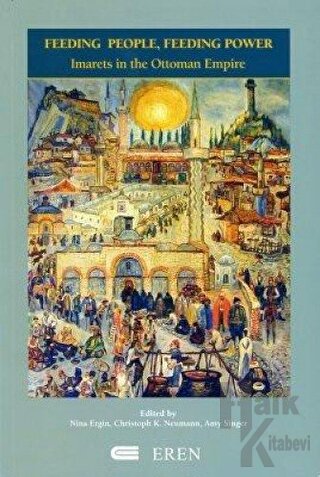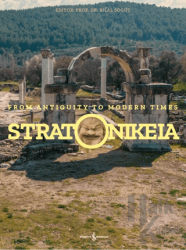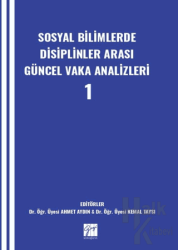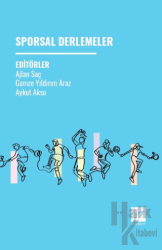Feeding People, Feeding PowerImarets in the Ottoman Empire

Imarets have long been recognized as one signature instution of the Ottoman Empire. These public kitchens were typicallay located in mosqu complexes or mutli-structured complexes, which included some or all of the following buildings; mosque, medrese- mekteb, tomb, caravansaray, sufi tekke ( or tekye), hospital, bath, market and other structures associated with the social, economic and cultural life of the population, usually in an urban setting.
Studying imarets is yet another way to explore the Ottoman vision of conquest, empire-building and imperial rule. The imarets were part of the multiple Ottomon provisioning systems supporting the imperial palaces, military campaigns, cities and the annual hajj caravan to Mecca and Medina. The public kitchens operated in a society where the state and beneficient institutions held a continual and considerable role in contributing to the daily subsistence of all kinds of individuals. Ultimately, the Ottoman Sultan's preoccupation with food was in part an outgrowth of his political and military capacities and his general responsibility to provide for his subjects.
Although the precise dynamic of the emergence of imarets as a distinct institutional form is a process that remains to be traced, it was clearly a confluence of historical practices, together with the demands placed on the early Ottoman sultanate, that gave rise to the particular form of the imaret. Evliya Çelebi remarked that in all his travels he saw "nothing like our enviable institution.
- Açıklama
Imarets have long been recognized as one signature instution of the Ottoman Empire. These public kitchens were typicallay located in mosqu complexes or mutli-structured complexes, which included some or all of the following buildings; mosque, medrese- mekteb, tomb, caravansaray, sufi tekke ( or tekye), hospital, bath, market and other structures associated with the social, economic and cultural life of the population, usually in an urban setting.
Studying imarets is yet another way to explore the Ottoman vision of conquest, empire-building and imperial rule. The imarets were part of the multiple Ottomon provisioning systems supporting the imperial palaces, military campaigns, cities and the annual hajj caravan to Mecca and Medina. The public kitchens operated in a society where the state and beneficient institutions held a continual and considerable role in contributing to the daily subsistence of all kinds of individuals. Ultimately, the Ottoman Sultan's preoccupation with food was in part an outgrowth of his political and military capacities and his general responsibility to provide for his subjects.
Although the precise dynamic of the emergence of imarets as a distinct institutional form is a process that remains to be traced, it was clearly a confluence of historical practices, together with the demands placed on the early Ottoman sultanate, that gave rise to the particular form of the imaret. Evliya Çelebi remarked that in all his travels he saw "nothing like our enviable institution.
Format:Kitap
- Taksit Seçenekleri
- Axess KartlarTaksit SayısıTaksit tutarıGenel ToplamTek Çekim304,50304,502158,34316,683107,59322,77654,81328,86937,22334,95Finansbank KartlarıTaksit SayısıTaksit tutarıGenel ToplamTek Çekim304,50304,502158,34316,683107,59322,77654,81328,86937,22334,95Bonus KartlarTaksit SayısıTaksit tutarıGenel ToplamTek Çekim304,50304,502158,34316,683107,59322,77654,81328,86937,22334,95Paraf KartlarTaksit SayısıTaksit tutarıGenel ToplamTek Çekim304,50304,502158,34316,683107,59322,77654,81328,86937,22334,95Maximum KartlarTaksit SayısıTaksit tutarıGenel ToplamTek Çekim304,50304,502158,34316,683107,59322,77654,81328,86937,22334,95World KartlarTaksit SayısıTaksit tutarıGenel ToplamTek Çekim304,50304,502158,34316,683107,59322,77654,81328,86937,22334,95Diğer KartlarTaksit SayısıTaksit tutarıGenel ToplamTek Çekim304,50304,502--3--6--9--
- Yorumlar
- Yorum yazBu kitabı henüz kimse eleştirmemiş.
- Yayınevinin Diğer Kitapları
-
30,00TL 26,10TLİNDİRİM %13Stokta yok
-
30,00TL 26,10TLİNDİRİM %13Stokta yok
-
150,00TL 130,50TLİNDİRİM %13Stokta yok
-
-
250,00TL 217,50TLİNDİRİM %13
-
140,00TL 121,80TLİNDİRİM %13Stokta yok
-
350,00TL 304,50TLİNDİRİM %13
-
200,00TL 174,00TLİNDİRİM %13
-
-
50,00TL 43,50TLİNDİRİM %13
-
70,00TL 60,90TLİNDİRİM %13Stokta yok
-
30,00TL 26,10TLİNDİRİM %13Stokta yok
-
150,00TL 130,50TLİNDİRİM %13Stokta yok
-
-
250,00TL 217,50TLİNDİRİM %13
-
140,00TL 121,80TLİNDİRİM %13Stokta yok
-
350,00TL 304,50TLİNDİRİM %13
-
200,00TL 174,00TLİNDİRİM %13
-
-
50,00TL 43,50TLİNDİRİM %13
-
70,00TL 60,90TLİNDİRİM %13Stokta yok
-
30,00TL 26,10TLİNDİRİM %13Stokta yok
-
150,00TL 130,50TLİNDİRİM %13Stokta yok
-
-
250,00TL 217,50TLİNDİRİM %13
-
140,00TL 121,80TLİNDİRİM %13Stokta yok
-
350,00TL 304,50TLİNDİRİM %13
-
200,00TL 174,00TLİNDİRİM %13
-
-
50,00TL 43,50TLİNDİRİM %13
-
70,00TL 60,90TLİNDİRİM %13Stokta yok
-
- Yazarın Diğer Kitapları
-
2.200,00TL 1.804,00TLİNDİRİM %18
-
2.200,00TL 1.804,00TLİNDİRİM %18
-
2.200,00TL 1.804,00TLİNDİRİM %18
-
-
-
300,00TL 279,00TLİNDİRİM %7
-
200,00TL 186,00TLİNDİRİM %7
-
-
-
2.200,00TL 1.804,00TLİNDİRİM %18
-
2.200,00TL 1.804,00TLİNDİRİM %18
-
-
-
300,00TL 279,00TLİNDİRİM %7
-
200,00TL 186,00TLİNDİRİM %7
-
-
-
2.200,00TL 1.804,00TLİNDİRİM %18
-
2.200,00TL 1.804,00TLİNDİRİM %18
-
-
-
300,00TL 279,00TLİNDİRİM %7
-
200,00TL 186,00TLİNDİRİM %7
-
-
-
-
395,00TL 343,65TLİNDİRİM %13
-
395,00TL 343,65TLİNDİRİM %13
-
750,00TL 652,50TLİNDİRİM %13
-
350,00TL 304,50TLİNDİRİM %13
-
60,00TL 52,20TLİNDİRİM %13Stokta yok
-
630,00TL 548,10TLİNDİRİM %13
-
136,00TL 125,12TLİNDİRİM %8
-
395,00TL 343,65TLİNDİRİM %13
-
750,00TL 652,50TLİNDİRİM %13
-
350,00TL 304,50TLİNDİRİM %13
-
60,00TL 52,20TLİNDİRİM %13Stokta yok
-
630,00TL 548,10TLİNDİRİM %13
-
136,00TL 125,12TLİNDİRİM %8
-
395,00TL 343,65TLİNDİRİM %13
-
750,00TL 652,50TLİNDİRİM %13
-
350,00TL 304,50TLİNDİRİM %13
-
60,00TL 52,20TLİNDİRİM %13Stokta yok
-
630,00TL 548,10TLİNDİRİM %13
-
136,00TL 125,12TLİNDİRİM %8




























